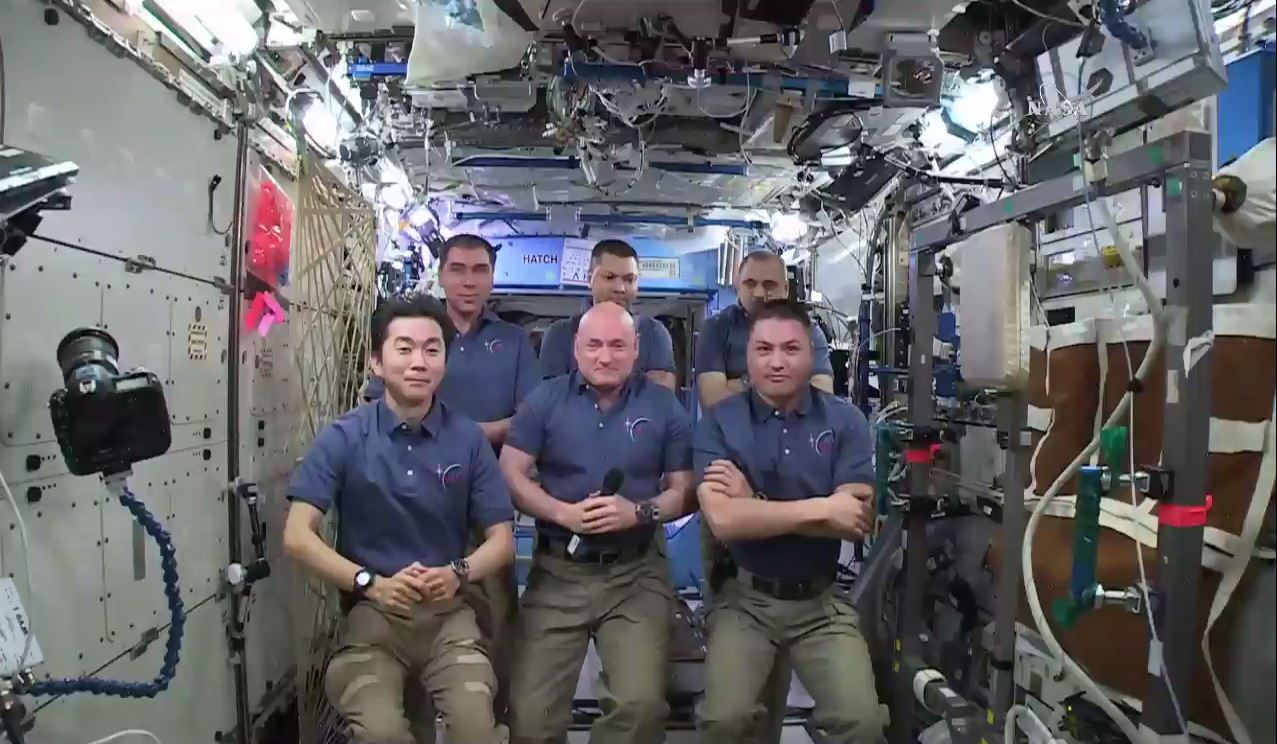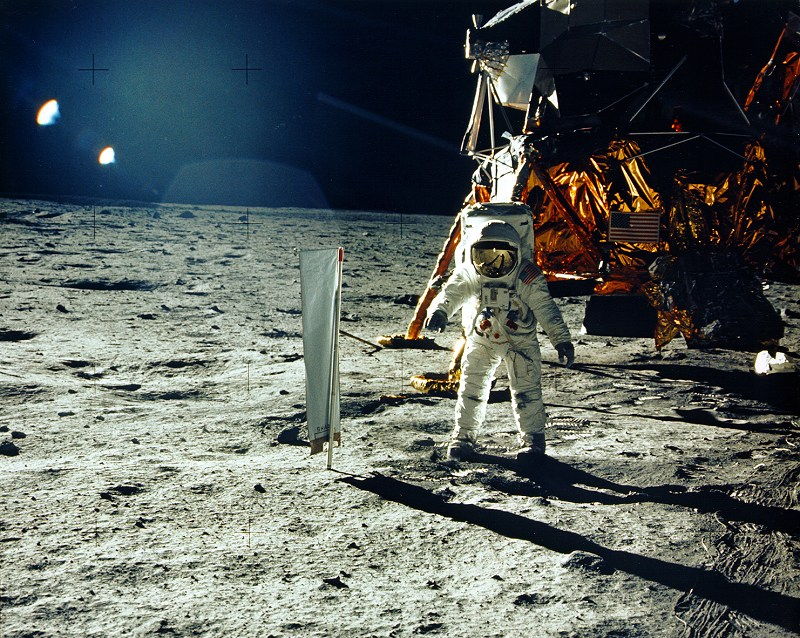Space Station Crew Celebrates 15-Year Streak of Humans in Orbit

Yesterday (Nov. 2) marked 15 years since humans took up permanent residence in the International Space Station, and the six crewmembers on board took some time to talk about what the station means for the future of human spaceflight, and how it's holding up after more than one and a half decades in space.
Construction began on the $100 billion International Space Station in 1998, with the launch of the Russian Zarya module. Humans have maintained a continuous presence on the orbiting laboratory since 2000. The station was built by five different space agencies representing 15 different countries.

"We've learned a lot from this space station that is very, very important to our future exploration beyond our local space environment," said NASA astronaut Scott Kelly during the news conference yesterday. Kelly is currently serving as commander of Expedition 45. He said the crew would not be exchanging gifts, but that this day marked "a very important anniversary for this incredible facility." [Building the International Space Station (Photos)]
Learning to go to Mars
During this morning's media briefing, Kelly and the other crewmembers were asked more than once why the space station is important, and why it should be maintained. In response, they brought up the station's role as a microgravity laboratory; as of Nov. 2, more than 1,760 research investigations have been done there, according to NASA.
According to Kelly, the most important experiment on the station is the ongoing investigation into how spaceflight affects human physiology and psychology. Kelly is participating in a year-long mission aboard the station, along with Russian cosmonaut Mikhail Kornienko. This is the longest consecutive stretch of time that an American astronaut has spent in space (cosmonauts have previously spent more than a year in orbit), and by far the most thorough scientific study of the human body during such a long stay.
"We have a very sophisticated life-support system here, a very sophisticated electrical system, and [the ability of ground control] to maintain this environment using a certain level of discipline and procedures and operations — all of that is something that we're going to need to explore deeper into space for longer periods of time," Kelly said.
Get the Space.com Newsletter
Breaking space news, the latest updates on rocket launches, skywatching events and more!
This sentiment was echoed by the other spaceflyers, including astronaut Kjell Lindgren.
"I think the space station really is a bridge. It’s a test bed for the technologies that we need to develop and understand to have a successful trip to Mars," Lindgren said. Among the hundreds of experiments that will take place while this current group of crewmembers are on board, Lindgren said, many of them are "critical to our understanding of how human physiology adapts to this microgravity environment and the things that we need to do to protect human health for a long trip to Mars, with respect to muscle, bone, immune system health, and radiation health as well."
Last month, at the International Symposium on Personal and Commercial Spaceflight (ISPCS) in Las Cruces, New Mexico, former astronaut Chris Ferguson, who works in the commercial crew program at Boeing, also argued that maintaining a human presence in low-Earth orbit is crucial for preparing humans for a trip to Mars.
"The knowledge gained [on space missions] is perishable. The lessons learned, that we're learning today, quickly become diluted without constant reinforcement," Ferguson said.
Keeping it together
The crew was also asked about how the station is holding up, 17 years after space-based construction began.
Kelly has taken two previous trips to the station, one in 2007 and another in 2010.
"It doesn't seem to me like I'm doing any more maintenance on the space station than I was [in 2010]," Kelly said. "I thought, when I got on board this time, the material condition of the space station was very good. But you know, obviously, as things age, over time, we're going to have more maintenance requirements. But the good news is, we plan for that. We have a lot of spares on board, spare parts. […] We have plans for changing those things and keeping this space station flying a long time into the future."
NASA has committed to maintaining the American side of the station through 2024. Kelly and other spaceflight industry leaders have discussed the possibility that private or commercial spaceflight companies might invest more money in the station in the future, so that NASA can put its resources toward a mission to Mars or another venture.
International collaboration
Missions aboard the station frequently consist of crews from two, three, or even four different countries (the current Expedition 45 has crewmembers from the United States, Russia and Japan). The collaborative effort that is required for these diverse groups people to communicate and work together was something the crew members also emphasized as an achievement of the station's 15-year history.
"People on the ground sometimes fail to hear each other, to see each other," said said cosmonaut and ISS Flight Engineer Oleg Kononenko. "Here in space this is impossible. Everyone is important here and the success of the program, and sometimes even life, depends on what each and every one of us does. So this is a perfect example of how cooperation can be achieved."
According to Kelly, when the space station was first being constructed, a discussion took place around what to name it. Initially, some of the crewmembers used the call name "alpha," but Kelly said it never quite stuck.
"I kind of thought that the space station should have a name, but there was never anything we could agree on, between all the international partners, as I remember it," Kelly said. "Now, it's 'the space station' to me. And I think it’s a great name. And I think the name 'International Space Station' really represents what it is."
Follow Calla Cofield @callacofield. Follow us @Spacedotcom, Facebook and Google+. Original article on Space.com.
Join our Space Forums to keep talking space on the latest missions, night sky and more! And if you have a news tip, correction or comment, let us know at: community@space.com.

Calla Cofield joined Space.com's crew in October 2014. She enjoys writing about black holes, exploding stars, ripples in space-time, science in comic books, and all the mysteries of the cosmos. Prior to joining Space.com Calla worked as a freelance writer, with her work appearing in APS News, Symmetry magazine, Scientific American, Nature News, Physics World, and others. From 2010 to 2014 she was a producer for The Physics Central Podcast. Previously, Calla worked at the American Museum of Natural History in New York City (hands down the best office building ever) and SLAC National Accelerator Laboratory in California. Calla studied physics at the University of Massachusetts, Amherst and is originally from Sandy, Utah. In 2018, Calla left Space.com to join NASA's Jet Propulsion Laboratory media team where she oversees astronomy, physics, exoplanets and the Cold Atom Lab mission. She has been underground at three of the largest particle accelerators in the world and would really like to know what the heck dark matter is. Contact Calla via: E-Mail – Twitter









